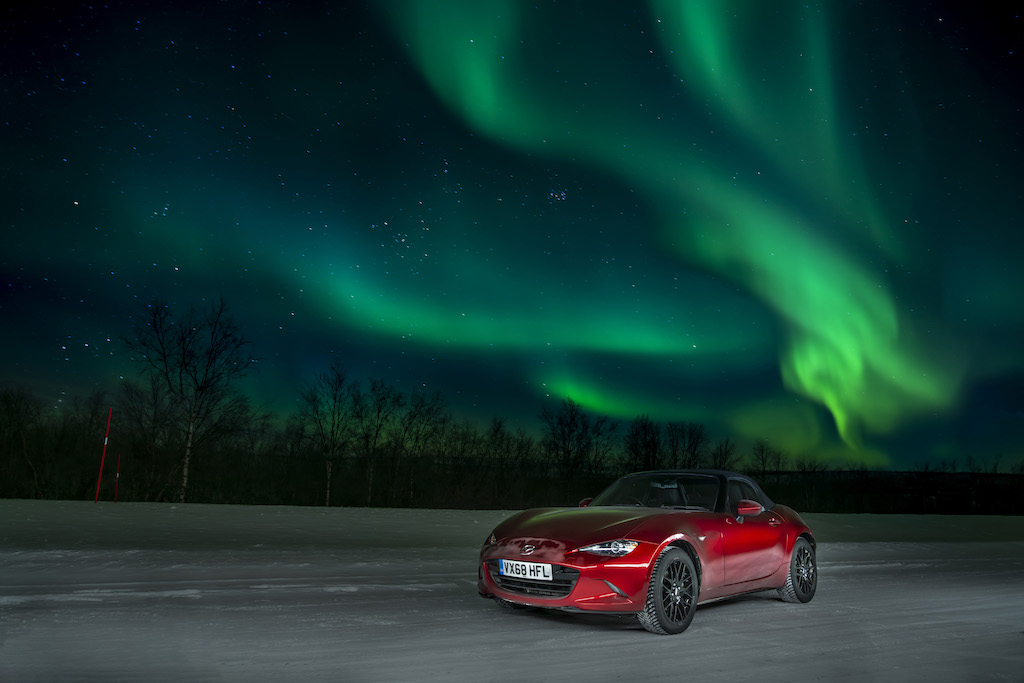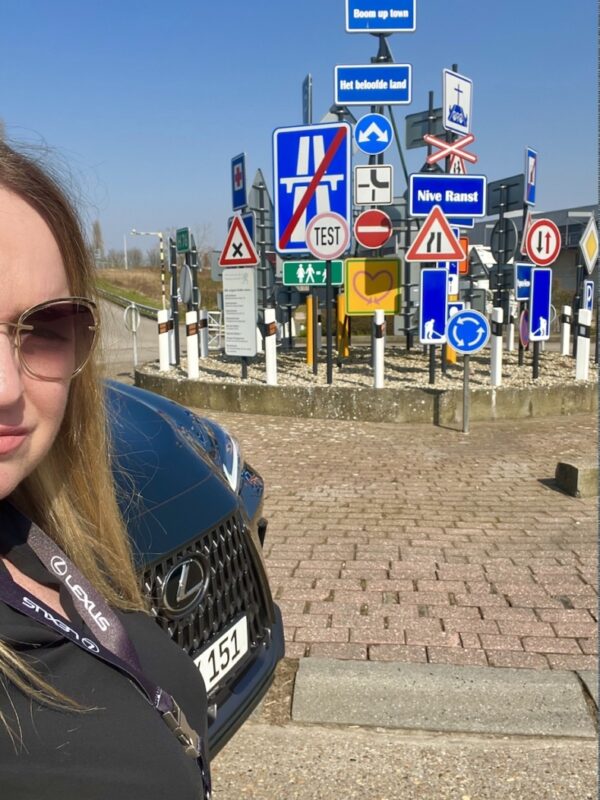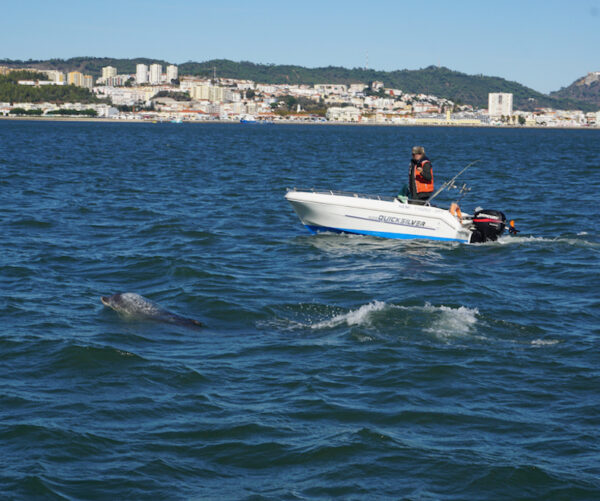When you touch in a conversation on the subject of the polar lights, you almost automatically get the answer ‘I want to see that too one day’. It seems that the Aurora Borealis – as the northern lights are also called – is on the bucket list of 99 percent of travel enthusiasts. The remaining percentage are probably the inhabitants of the polar region itself.
Text Anja Van Der Borght
Making a trip to Lapland and the Arctic circle is no guarantee of seeing the polar lights. However there are many things you can do to raise your chances.
Twice this year we got a proposal to start a search for the northern lights in Lapland. A first time in February to Kiruna with Xperience in the company of the well known Television Cook and grillmaster Peter De Clercq, who would spoil our tatsebuds. But as Kiruna is a rather rough and less cozy old mining town, we preferred an arctic drive from Lulea (Sweden) to Rovaniemi (Finland) with the Japanese car brand Mazda. The coming three weeks we will spoil you with our fantastic polar experiences, from a husky sleigh ride to spending a few nights in the breathtaking Arctic hotel to staying in a Sami-tent.
What are the northern lights?
Named after the Roman goddess of Dawn, Aurora, and the Greek name for the north wind, Boreas, by the Italian astronomer Galileo in 1619, the Aurora Borealis is a spectacular light show that occurs when electrically charged particles released by the Sun enter the earth’s atmosphere and collide with the molecules of gases such as oxygen and nitrogen. Their quantity beingrelated to the strength of sunspot and solar flare activity on the Sun’s surface, thefree electrons and protons carried on the solar wind are largely deflected by the Earth’s magnetic field.
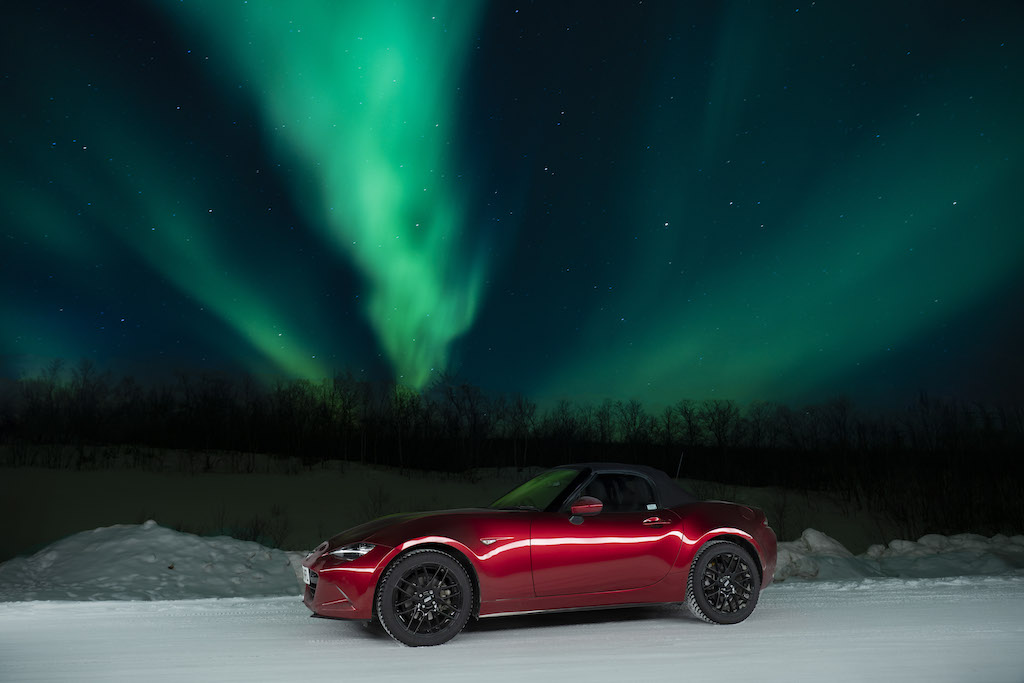 Image seeing the Northern lights with the roof of your convertible down. Mazda MX-5
Image seeing the Northern lights with the roof of your convertible down. Mazda MX-5
Why we can’t see the northern lights everywhere?
Because the Earth’s magnetic field is weaker at the poles, some particles are allowed to enter the atmosphere there.
Why do the northern lights vary in color?
Variations in aurora color relate to the type of gas particles involved. The most common color is green, produced by oxygen molecules located some 60 miles above the Earth. Rarer red auroras are produced by high altitude oxygen, at heights of up to 200 miles, whilst blue or purple auroras are produced by nitrogen.
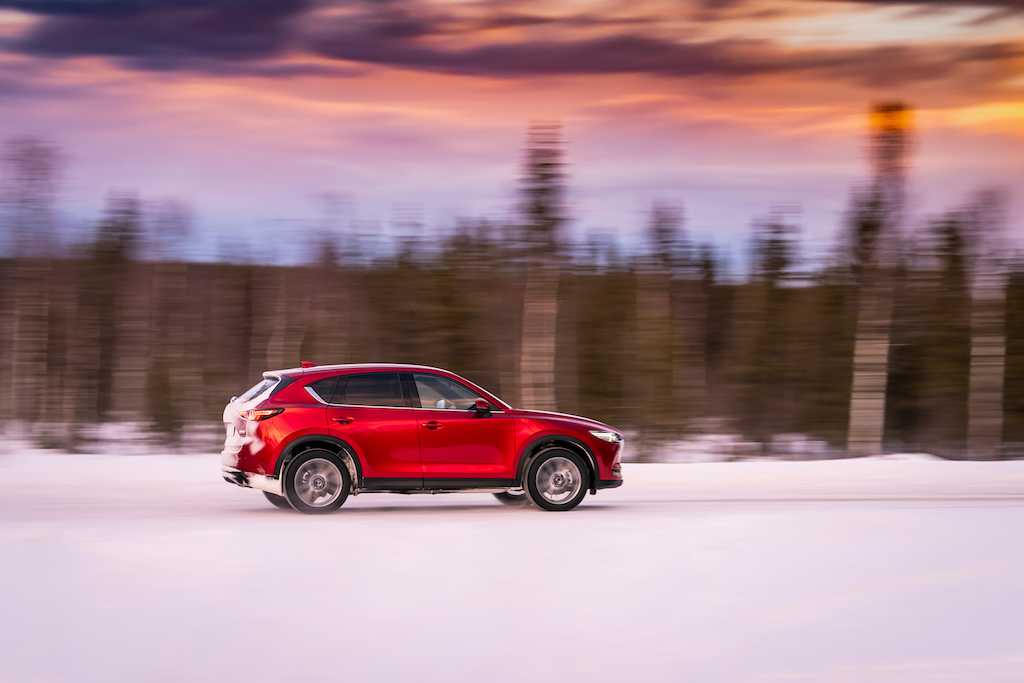 The updated Mazda CX-5 in Lapland. Photo: Mazda
The updated Mazda CX-5 in Lapland. Photo: Mazda
What are the best periods to go and see the northern lights ?
The northern lights are strongest when an active area of the Sun’s surface faces the Earth. The most spectacular displays thus occur at roughly 27-day intervals -the time it takes for the Sun to rotate once. October, February and March are the best months for witnessing this extraordinary phenomenon, between the hours of 10pm and 2am.
Which are the best places to see the northern lights ?
You have the best chances to see this breathtaking light spectacle of the northern lights when you are in the Polar Lights circle. This circle shaped area around the geomagnetic pole is everywhere to the north of the North Pole circle. Here statistically, the northern lights are observed most often. (around 100 nights per year). The most popular places to observe the Northern Lights in the polar area are around the Norwegian coasts, and especially in the provinces Tromsø and Finnmark.
Top 12 spots to see the Northern Lights
1. Svalbard (Spitsbergen), Norway
2. Tromsø, Norway
3. Kirkenes, Norway
4. Rovaniemi, Finland.
5. Luleå, Sweden.
6. Alta, Norway.
7. Jukkasjärvi, Kiruna, Sweden.
8. Kakslauttanen, Ivalo, Finland.
9. Reykjavik, Iceland
10. North Canada
11. Scotland and The Highlands, United Kingdom
12. Waddenisland Terschelling (Dark Sky Reserve) or National Park Lauwersoog (on the nomination lijst for Dark Sky Reserve), Netherlands.
What about the clouds and the moon
The biggest enemy of the Northern Lights is the clouds and the moon. Needless to say that under a covered sky, one cannot observe the Northern Lights. Small cloud formations however can add a special effect.
How does the moon influence the northern lights?
When the northern lights are not very intense, the absence of moonlight helps. Moonlight will add to the light pollution of the sky, which makes it dark blue instead of completely black. This reduces the contrast between the northern lights and the background. At full moon, the weakest glow of northern lights, which would be visible at new moon, cannot be seen with the naked eye. But when the northern lights are more intense, the moonshine will not be necessarily a drawback. It will make the wondrous light spectacle even more beautiful, just as the small pack of drifting clouds.
We are all ready for it. Stay tuned, and read more about it the coming weeks.
